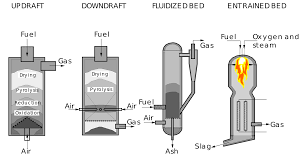
Understanding Impact of COVID-19 on Stationary Fuel Cell Market
Global Stationary Fuel Cell Market: Key Highlights
- The global stationary fuel cell market was valued at ~US$ 3 Bn in 2018, and is anticipated to expand at a CAGR of ~12% during the forecast period.
- Rise in the need for eco-friendly alternatives for combustion engines is expected to drive the stationary fuel cell market.
- Asia Pacific accounts for a major share of the global stationary fuel cell market, owing to increase in the demand for stationary fuel cells as substitutes for conventional sources of energy such as lithium-ion batteries in various commercial and industrial applications in the region.
Key Drivers of Global Stationary Fuel Cell Market
- Stationary fuel cells can reduce fuel consumption by at least 50% as compared to other conventional backup sources with internal combustion engines. This is expected to boost the demand for stationary fuel cells in various sectors to replace conventional energy generation products.
- Apart from environmental benefits, stationary fuel cell systems offer many advantages over conventional combustion-based power generation systems. Stationary fuel cell systems are compact and create less noise. This is encouraging end users to replace conventional electricity generation systems with stationary fuel cell systems.
- Stationary fuel cells are increasingly being used as key substitutes for lithium-ion batteries and other back-up power systems in large industrial applications. This is anticipated to drive the growth of the stationary fuel cell market.
Request Brochure:
https://www.transparencymarketresearch.com/sample/sample.php?flag=B&rep_id=57843
Solid Oxide Fuel Cells (SOFC) to Offer Lucrative Opportunities
- Solid oxide fuel cells (SOFCs) is likely to be a rapidly expanding segment of the global stationary fuel cell market during the forecast period, as these cells offer clean, low-pollution technology to generate electricity electrochemically at high efficiencies. These fuel cells provide several advantages over traditional energy conversion systems, such as high efficiency, reliability, modularity, fuel adaptability, and low level of emissions.
- Solid oxide fuel cells are electrochemical conversion devices that produce electricity through the oxidization of fuel. These fuel cells consist of solid oxides or ceramic electrolytes. Solid oxide fuel cells are used in large stationary power plants due to their ability to function at high operating temperatures.
High Cost of Production to Hamper Market
- The cost of metal catalysts used in stationary fuel cell systems is high. Manufacturers find it difficult to offer competitive prices of stationary fuel cell systems as compared to their alternatives. This is estimated to hamper the demand for stationary fuel cells.
Asia Pacific Dominates Global Stationary Fuel Cell Market
- In terms of value, Asia Pacific dominated the global stationary fuel cell market with ~56% share in 2018. The region is expected to remain highly lucrative during the forecast period, led by rapid industrialization and rise in the demand for electricity.
- Japan and South Korea are key countries of the stationary fuel cell market in Asia Pacific. A large number of stationary fuel cell manufacturers, such as Doosan Corporation, Toshiba Corporation, Mitsubishi Hitachi Power Systems, Ltd, and Panasonic Corporation, are located in these countries.
More Trending Reports by TMR:
Few Top Players Accounted for ~55% Market Share in 2018
- The global stationary fuel cell market is consolidated, driven by a few major players. Currently, the market is expanding at a rapid pace, and key market players are largely focusing on research & development activities. The top six players – Bloom Energy, FuelCell Energy, Inc., Plug Power, Inc., Ballard Power Systems Inc., Ceres Power Holdings plc, and Hydrogenics Corporation – cumulatively accounted for ~55% share of the global market in 2018.
- Companies operating in the global stationary fuel cell market are investing significantly to expand their product portfolios and improve their distribution networks. They have adopted strategies such as mergers and acquisitions, new product development, joint ventures, and expansion, to cater to the increasing demand for stationary fuel cells in different regions. For instance, on April 10, 2019, Plug Power Inc. partnered with Lipari Foods for the Gendrive hydrogen fuel cell-powered fleet.
Global Stationary Fuel Cell: Research Scope
Stationary Fuel Cell Market by Type
- Proton Exchange Membrane Fuel Cells (PEMFC)
- Phosphoric Acid Fuel Cells (PAFC)
- Molten Carbonate Fuel Cells (MCFC
- Solid Oxide Fuel Cells (SOFC)
- Direct Methanol Fuel Cells (DMFC)
- Others (including Alkaline Fuel Cells)
Stationary Fuel Cell Market by Stacking
- Planar Bipolar Stacking
- Stacks with Tubular Cells
Stationary Fuel Cell Market by End User
- Residential
- Commercial
- Industrial
Stationary Fuel Cell Market by Region
- North America
- U.S.
- Canada
- Europe
- Germany
- France
- U.K.
- Italy
- Spain
- Russia & CIS
- Rest of Europe
- Asia Pacific
- China
- Japan
- India
- South Korea
- ASEAN
- Rest of Asia Pacific
- Latin America
- Brazil
- Mexico
- Rest of Latin America
- Middle East & Africa
- Israel
- South Africa
- Rest of Middle East & Africa
Buy Now:
https://www.transparencymarketresearch.com/checkout.php?rep_id=57843<ype=S
About Us
Transparency Market Research is a global market intelligence company, providing global business information reports and services. Our exclusive blend of quantitative forecasting and trends analysis provides forward-looking insight for thousands of decision makers. Our experienced team of analysts, researchers, and consultants use proprietary data sources and various tools and techniques to gather and analyze information.
Our data repository is continuously updated and revised by a team of research experts, so that it always reflects the latest trends and information. With a broad research and analysis capability, Transparency Market Research employs rigorous primary and secondary research techniques in developing distinctive data sets and research material for business reports.

